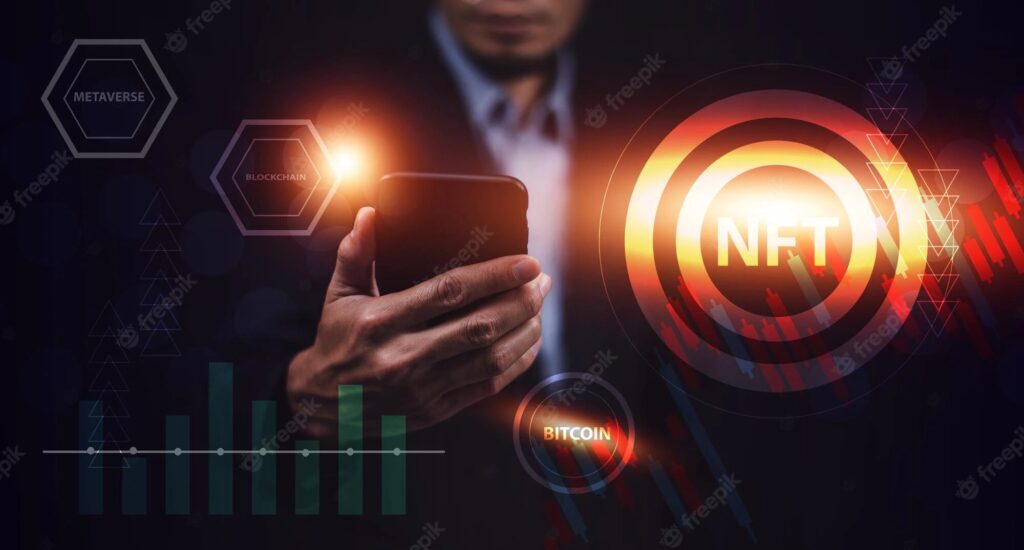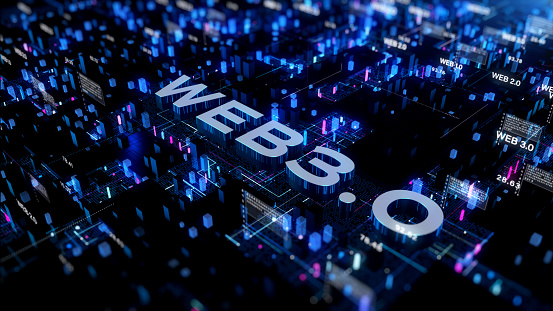he Unlike Bitcoin (BTC), “Altcoins” like Ethereum (ETH) can be programmed using smart contracts. If Susie receives 25 ETH, Kristjan gets the CryptoPunk, the programming language will automatically execute the transaction.
Bitcoin can be bought, sold, and exchanged directly without a bank. Satoshi Nakamoto, the inventor of Bitcoin, first articulated the idea of the currency as “an electronic payment system based on cryptographic proof instead of trust.”
Non-fungible tokens (NFTs) are digital assets that cannot be traded for tokens of the same value. In a nutshell, the blockchain is the underlying technology behind these cryptographic assets. The assets cannot be traded or exchanged like other cryptocurrencies.
How Blockchain Works
Blockchain records and shares digital data without tampering. A blockchain creates immutable, incorruptible transaction ledgers. Blockchains are also called distributed ledgers (DLT).
The blockchain concept was first proposed as a research project in 1991, making it older than its first widely used application, Bitcoin, which appeared in 2009. In the years following, blockchains’ popularity skyrocketed thanks to the development of new digital currencies, DeFi applications, NFTs, and smart contracts.
Get to know more about other Blockchain-related concepts like web3 in real estate, Real estate transactions using Blockchain, and many more.
How NFTs Work
Minting is the process by which a new NFT is created and the associated data is added to the blockchain. The minting procedure entails, at a high level, the generation of a new block, the validation of the NFT’s data by a validator, and the storage of that data. In order to properly assign ownership and control the tradability of the NFT, smart contracts are frequently incorporated into the minting procedure.
Each newly created token has a cryptographic fingerprint and blockchain address. Ttoken has a creator, whose address can be found in a public ledger. Each NFT is unique, even if 5,000 are created (for example, tickets to a music festival).
Bitcoin Mining
“Mining” creates coins and keeps the network online.
Miners compile batches of transactions into blocks by solving a difficult cryptographic calculation, and all transactions are broadcast publicly. If it’s valid, the blockchain will include the next block’s data, which the first miner to solve it will broadcast.
After confirming a block, a miner receives a portion of the newly created bitcoin.
There is a hard cap of 21 million bitcoins built into the software. Never again will there be more than that. By 2140, all of the coins in existence will be in circulation. Every four years, the software doubles the difficulty of Bitcoin mining by halving the reward for doing so.
Once Bitcoin was released, anyone with a computer and some spare time could mine a coin almost instantly. With the fluctuating price of bitcoin and the need for increasingly powerful equipment to process the calculations quickly, mining can sometimes be more expensive than it’s worth.
Senders can add incentive fees of varying amounts to encourage miners to include their transactions in a block. These fees will serve as an incentive for miners to keep working even after all coins have been created. For the Bitcoin network to function, this is essential.
Blockchain Powers More than Crypto
Blockchain technology is being utilized by Walmart to monitor the fresh lettuce supply. In the event of an e. coli outbreak, they can identify the exact supplier, farm, day, picker, and even row that the contaminated romaine lettuce came from. What once took 60 days to trace can now be done in just 6 seconds thanks to blockchain technology.
The points below provide a more thorough explanation:
1) Cryptocurrency is Digital and Encrypted
Criminals rely on cash. That doesn’t mean cash is bad, though. Even criminals can use cryptocurrency, which doesn’t make it bad. Why do we have to have or seek crypto? The main selling point is the three main features that blockchain technology brings to cryptocurrency: digitization, decentralization, and trust. Decentralization eliminates the need for intermediaries like banks or governments that have manipulated or interfered (Lehman Brothers, Country of Brazil) and relies on a peer-to-peer network. Trust comes from the accountability and transparency inherent in blockchain technology, which many fiat currencies lack.
Bitcoin (BTC), Alternative Coins, and Tokens are the three most common forms of cryptocurrency. “Altcoins” such as Ethereum (ETH) can be programmed using smart contracts, unlike Bitcoin (BTC). If Susie receives 25 ETH, Kristjan gets the CryptoPunk, the programming language will automatically execute the transaction. Financial and entertainment dApps alike use tokens, which can have a speculative value. However, USDT, TUSD, USDC, and DAI, stable coins pegged to the US Dollar, are widely used for transactions due to their value stability. How about buying a pizza with bitcoin? From the time you placed your order until you made your final payment, the price fluctuated. Pizza is not worth spending your Bitcoin on.
2) NFTs are made with Blockchain Technology and Transacted with Cryptocurrency
New financial instruments (NFTs) can be paired with digital currency and the blockchain. For a refresher, check out my earlier post “Crazy about NFTs.” Almost all NFTs are tokens that adhere to the ERC-721 standard on the Ethereum blockchain (recall that Ethereum supports programmable smart contracts, whereas Bitcoin’s blockchain does not). To store wealth (such as in Bitcoin). One example of the versatility of cryptocurrencies is the ability to “mine” on Ethereum while “paying” in DAI. This skit from Saturday Night Live on March 28, 2021, is, in my opinion, the funniest and most original way to describe NFTs.



